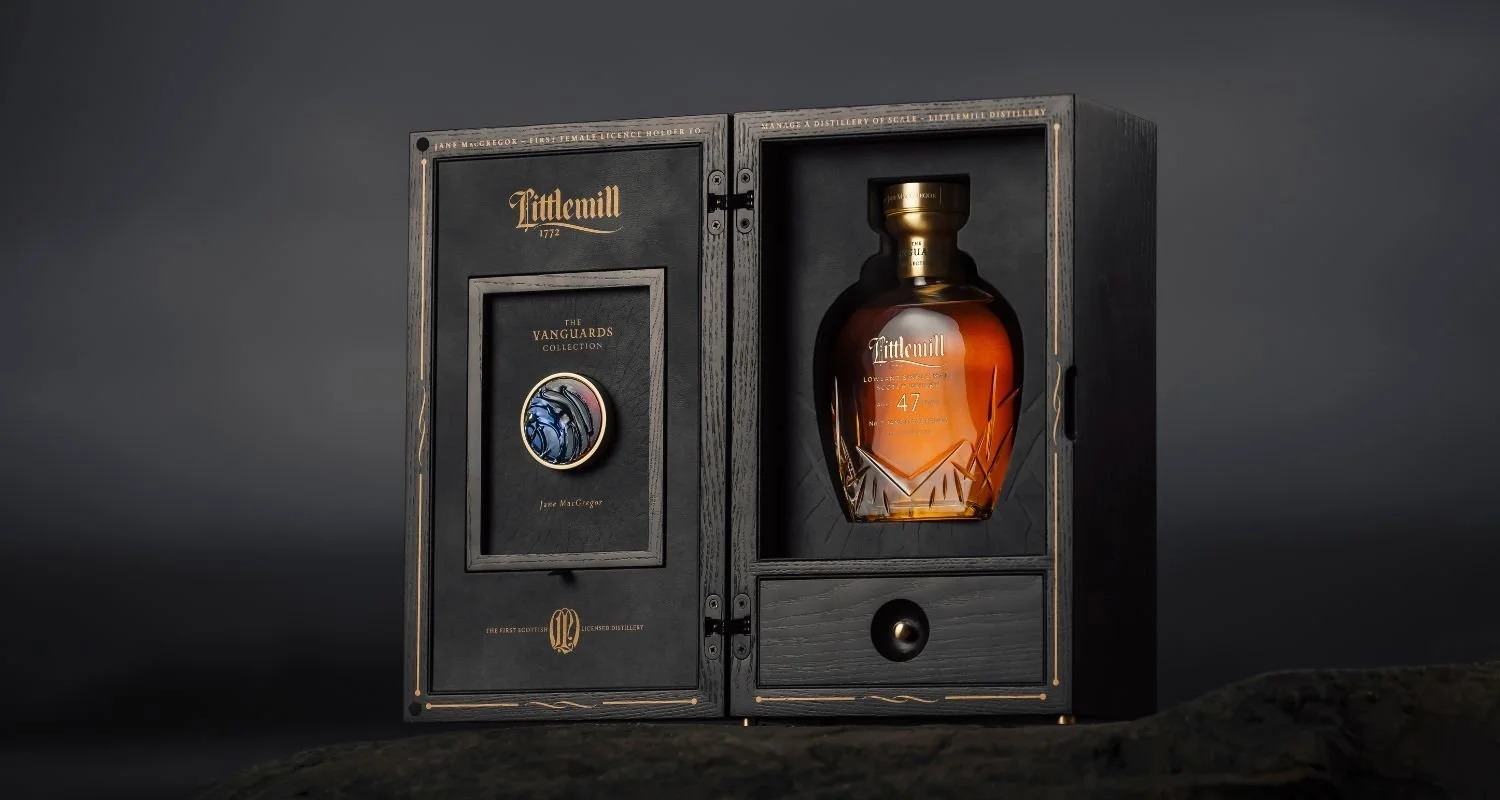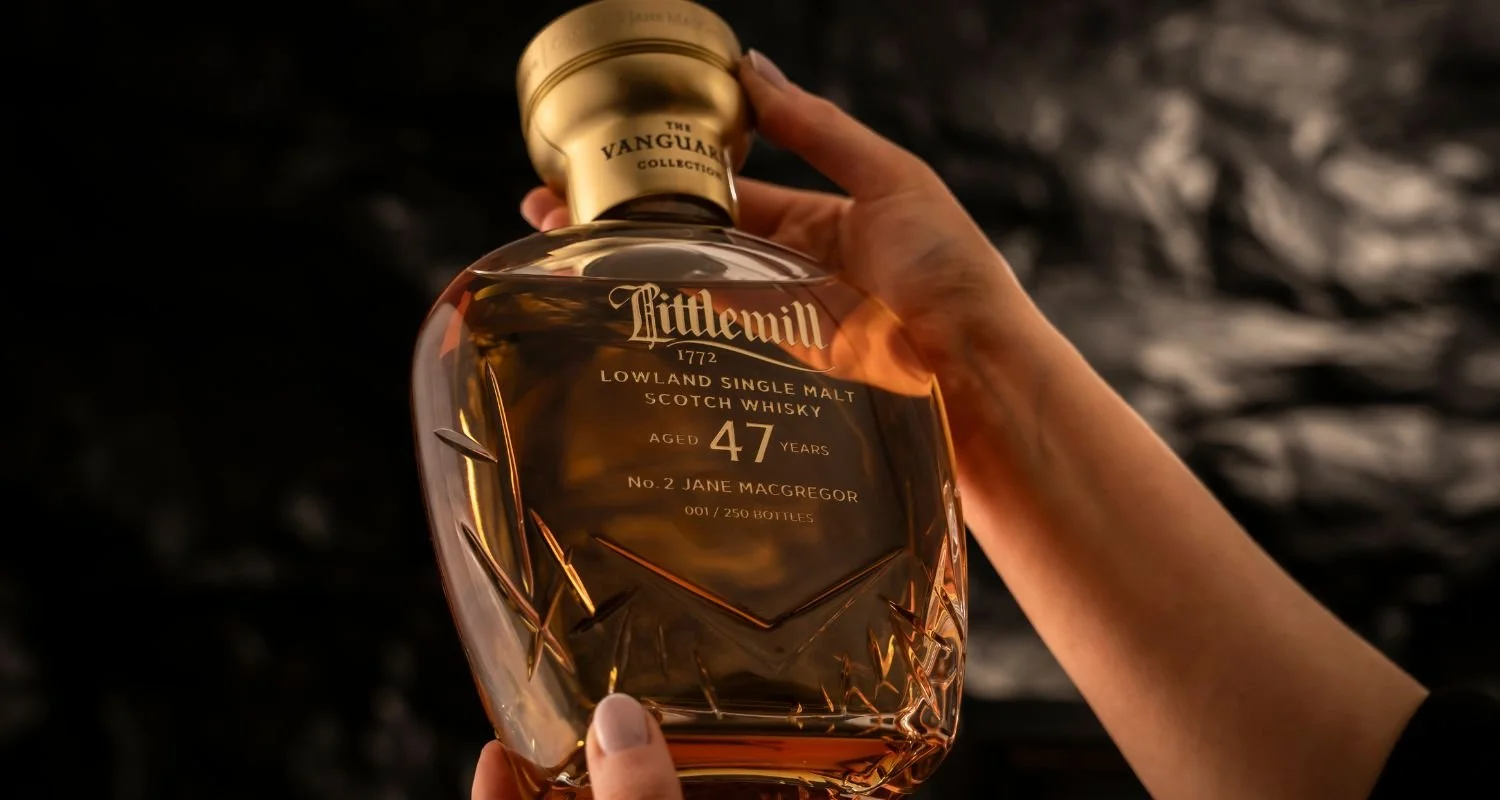Who’s Jane MacGregor, the trailblazing inspiration for Littlemill 47 Year Old?
Jane MacGregor was one of Scotland’s first female licence holders who left an indelible mark on Scotch history
Littlemill distillery has unveiled the second whisky in its Vanguards Collection, paying homage to former distillery manager Jane MacGregor. But who was she, and why is her story now being told?
Loch Lomond Group launched its annual Littlemill Vanguards Collection in 2023 with the aim of celebrating the lost distillery’s legacy and the often unsung trailblazers who have left their mark not only on the brand but on whisky making as a whole, with four releases in total.
Its first release, Chapter One, honoured Littlemill employee Robert Muir, who was granted the first known distillery licence in 1773 by the Government of King George III to ‘retail ale, beer and other excisable Liquours’.
Now Vanguards Chapter Two, a 47-year-old single malt that’s the oldest release from the distillery, pays homage to Jane MacGregor, Littlemill’s former distillery manager who’s said to be one of the first women to hold a licence for a distillery of that scale in 1823 (the same year the Excise Act was passed).
Littlemill Vanguards Collection Chapter Two: Jane MacGregor
Jane MacGregor’s story had remained relatively unknown until the distillery team dug into the archives, spurred on by whisky writer Dave Broom and The Dormant Distillery Company’s Arthur Motley, who were invited to take part in building the story following their Liquid Antiquarian podcast episode Hidden Women: Female Pioneers of Scotch Whisky. Jane’s ambitious and pioneering spirit inspired the team to tell her tale.
Littlemill distillery manager
Records suggest that Jane MacGregor, thought to be a widow, took the reins as distillery manager in 1823, most likely inheriting the role after the passing of her husband, Peter. She enlisted the support of her children to help her ensure Littlemill’s smooth continuation, but did much more than that, taking production to new heights year-on-year (nearly doubling it to 50,000 gallons at its peak), and raising the distillery’s prestige.
Littlemill prospered at a time when other distilleries were flailing, and she secured relationships with distributors and agents meaning its whisky was sold throughout the UK.
“There was a whole host of Lowland whiskies beginning to emerge in the 1820s; not all of them survived, but Littlemill did,” says Broom of the whisky landscape of the time. “That says to me that the quality of the spirit must have been great and the business must have been run in an extremely good way… Jane was in charge of the business side of everything, ensuring Littlemill was of the right quality and actually was able to be sold on the market and further afield.”
Of her business acumen, Motley continues: “Littlemill continues to grow by some scale while she is running that distillery. She laid some foundations for Littlemill and it had that period of 20 years or so when it thrived. That lay the foundations for the people who came afterwards and means we still have some Littlemill to drink now… Jane MacGregor played a huge part in that.”
Littlemill Vanguards Chapter Two honours the enduring legacy of Jane MacGregor
MacGregor’s position as a woman in a distillery manager role on that scale was also rare at the time. While women would certainly have been making whisky (Motley uncovers eight in the episode from 1819-1833, including Agnes Menzies of Dunmore, Elizabeth Phillips of Glenturret, and Margaret Crookshanks of Stromness), being responsible for the business side of running a distillery was less common.
“At a time when women were rarely permitted to run a business, she built one,” says Broom. “Proof that resilience and resolve will overcome adversity.”
Her role in securing the popularity and future of Scotch whisky is something this release also hopes to shine a light on, as Motley goes on to explain. “The Scotch whisky industry needed someone like Jane MacGregor to found these distilleries, to improve the spirit that they made so it became popular, and by the end of the century it was exported all around the world, so she is part of a great number of people who established the Scotch whisky industry.”
The distillery changed ownership in 1840, to Hector Henderson, and without any other records to suggest otherwise, that leads the brand to believe she remained in charge for those 17 years inbetween.
Master blender of Loch Lomond Group (which owns Littlemill), Michael Henry, said: “Between Littlemill’s founding and its lamentable closure [in 1994], a remarkable story of innovation took place. It is a story rarely told but one that touches the whole world of whisky… A story of that measure requires a whisky of remarkable quality, so it is fitting that now is the time we release our oldest aged statement to-date.”
Glass artist Bethany Wood has partnered with Littlemill to bring MacGregor’s story to life
The brand has also partnered with glass artist Bethany Wood, owner of Blowfish Glass in Stourbridge, to reflect the glass ceilings MacGregor broke in the world of whisky making.
Wood has crafted 250 glass bottle stoppers, inspired by MacGregor’s story and using tools from the same era. Each stopper incorporates rippling metallic hues, reflecting Littlemill’s copper stills and the water used in whisky making.
“There are so many wonderful parallels between our two crafts,” said Wood of the partnership. “Being a woman in a traditional trade, I was inspired by Jane’s story and the ceilings she broke through for her era… These stoppers are not just functional pieces but artistic representations of Jane's journey.”
Littlemill Vanguards Two: Jane MacGregor is a 47-year-old single malt first distilled on 4 October 1976, matured in refill Bourbon barrels and recasked into refill American hogsheads in 1996. Just 250 decanters are being released of the 44.9% ABV single malt, for £14,000 a piece.







